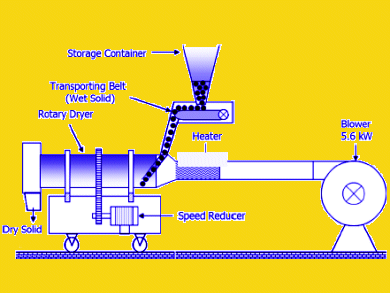Conventional rotary dryers are used in many industrial sectors, including the cement, fertilizer, and mineral industries. Because of the complexity involved in estimating some parameters, most rotary dryers are over-designed, wasting thermal energy and, hence, leading to unnecessarily high costs.
Marcos Barrozo and colleagues, Federal University of Uberlândia, Brazil, evaluated the effects of rotational speed, air velocity, material flow rate, and drum slope on the mean residence time and holdup in a concurrent rotary dryer. The performance of the concurrent rotary dryer was then compared with that of a roto-aerated dryer.
The roto-aerated dryer showed a 36 % shorter residence time (on average) than the conventional concurrent cascade configuration. Furthermore, the difference between inlet and outlet solids temperature was 1.4- to 3.6-fold higher in the roto-aerated dryer than in the conventional concurrent rotary dryer.
- Fluid Dynamics in Concurrent Rotary Dryers and Comparison of their Performance with a Modified Dryer
B. C. Silvério, J. M. F. Façanha, E. B. Arruda, V. V. Murata, M. A. S. Barrozo,
Chem. Eng. Technol. 2011, 34 (1).
DOI: 10.1002/ceat.201000338




